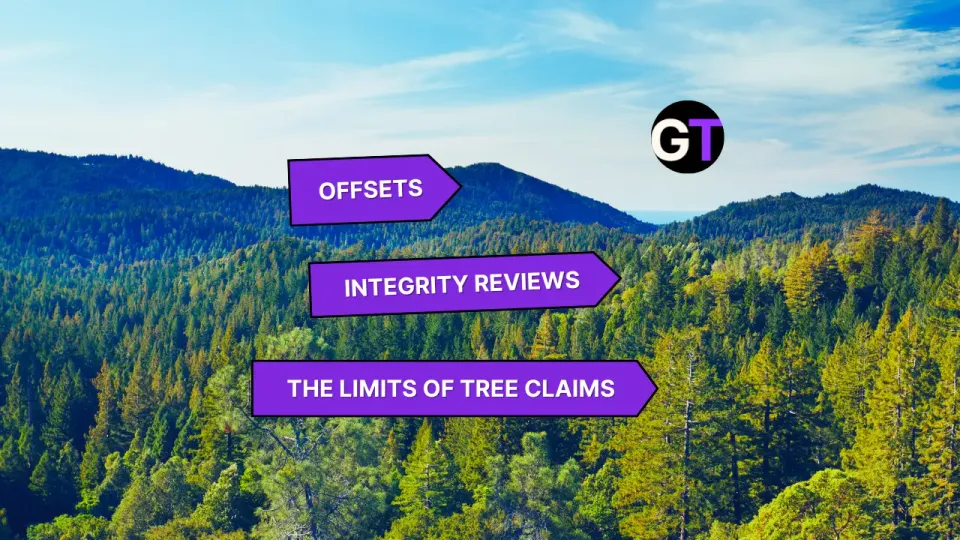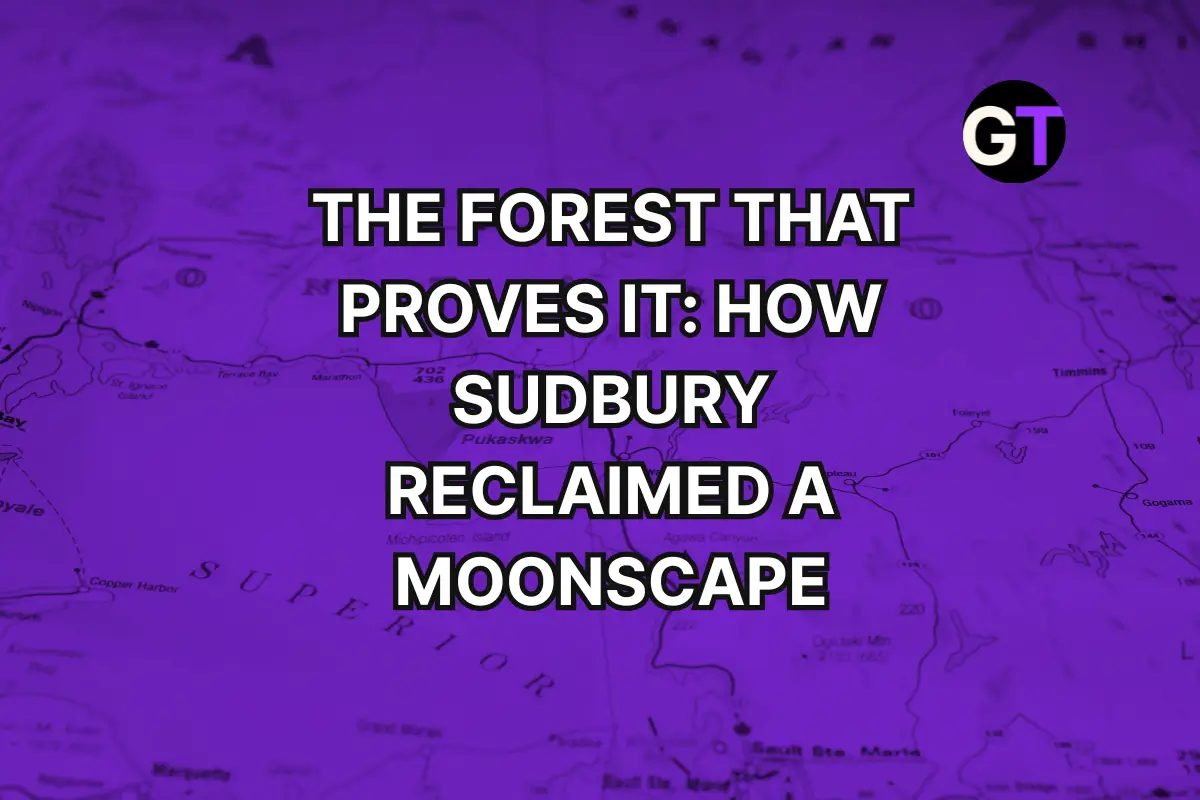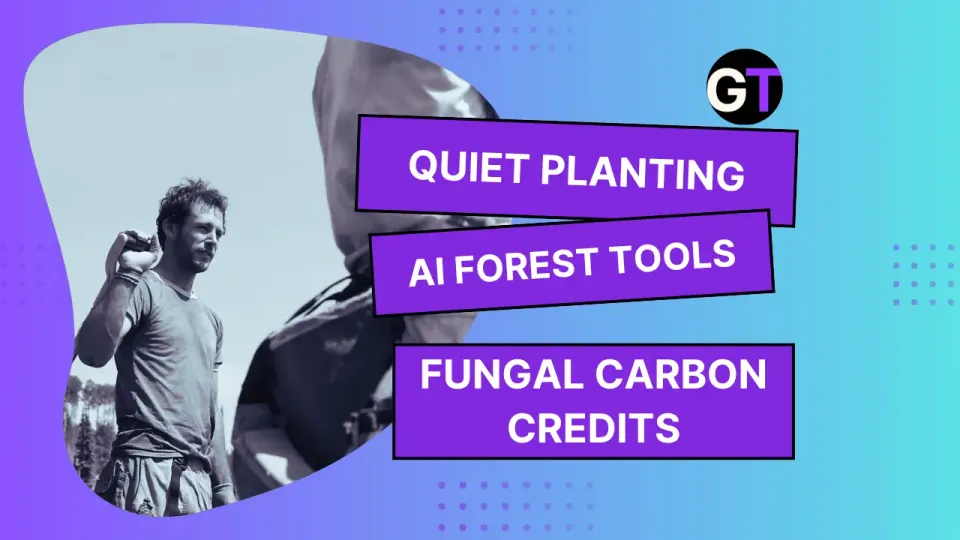Weekly Forest News, April 25
UN launches Decade for Reforestation, Apple’s eucalyptus play stirs debate, and cocoa maps face a reality check.

UN Declares 2027–2036 the Decade for Afforestation and Reforestation
In a leafy leap toward global forest recovery, the UN General Assembly has proclaimed 2027 to 2036 the official Decade for Afforestation and Reforestation, rallying 155 nations behind the cause (with the U.S. lone-wolfing its opposition). The goal? Mobilize action to combat the loss of 10 million hectares of forest each year and encourage sustainable forest management worldwide. Key UN agencies like UNEP and FAO are invited to help steer the effort, with funding coming from voluntary contributions only—so no one's being strong-armed into planting pine trees. While many countries praised the move as a climate win, others expressed concern over costs and potential overlap with existing initiatives. Still, if this decade delivers on its promises, it could be a turning point in how we reforest our way out of climate catastrophe.
💬 Will this be a true forest fix or just more green talk with no bark or bite?
👉👉 Read the press release from the United Nations
Tond Tenga: Burkina Faso’s Carbon Credit Trailblazer
Verra has officially registered the Tond Tenga project in Burkina Faso—the first to use its own ICVCM-approved methodology (VM0047) under the Verified Carbon Standard (VCS). This afforestation and agroforestry initiative aims to restore over 12,000 hectares of degraded land, sequester 3.1 million tons of CO₂ over 40 years, and deliver community-driven benefits like biodiversity, sustainable livelihoods, and gender empowerment.
💬 So, is this the gold standard for carbon credits—or just another green badge in a crowded market?
👉👉 Read more in Carbon Herald
Chainsaws for Change: Aspen Revival in the Sierra
The National Forest Foundation and Humboldt-Toiyabe National Forest are giving 349 acres of California’s Alpine County a much-needed aspen makeover—by hiring contractors to chop and pile up pesky conifers encroaching on the groves. The mission? Restore biodiversity and boost forest resilience. But here’s the quiet part: How much does this kind of ecological makeover actually cost? And who’s tracking the outcomes to make sure we’re not just piling up feel-good brush along with the trees?
💬 In a restoration world full of good intentions, what will it take to ensure cost transparency and real impact?
👉👉 Read the RFP from the National Forest Foundation
More Species, More Trees: Tree Packing’s Big Forest Energy
A blockbuster study led by Xavier Morin and friends has identified the “Tree Packing Effect” (TPE) as a major driver behind forest productivity. Analyzing data from six European countries and simulating a casual 7 million+ virtual forests, the team found that diverse tree communities can fit more trees per hectare—and those trees grow more efficiently. The effect is especially strong in tough climates, making biodiversity a secret weapon in climate adaptation and carbon storage.
💬 So, could mixed-species forests be the unsung heroes of climate resilience—or are we just romanticizing tree chaos?
👉👉 Read more in the Journal of Ecology
Carbon Markets: Beyond the Headlines, Into the Heart of Climate Justice
In a thought-provoking piece, Mandy Rambharos argues that the prevailing narrative around carbon markets is missing the mark. While headlines often focus on the mechanics and controversies of carbon trading, Rambharos emphasizes the need to highlight the real-world impacts on communities and the environment. She points out that carbon markets, when implemented thoughtfully, can drive significant benefits for local populations, including job creation and sustainable development. However, these stories are frequently overshadowed by technical debates and policy discussions. Rambharos calls for a shift in focus to ensure that the human and ecological dimensions of carbon markets receive the attention they deserve.
💬 So, are we ready to move beyond the surface and explore the deeper narratives of carbon markets?
👉👉 Read more in News24
Cocoa Cartography: Mapping the Truth in Chocolate’s Climate Claims
The World Cocoa Foundation just dropped a reality check for chocolate companies: your deforestation and reforestation maps might need a serious fact-check. In its first-ever independent assessment—teamed up with Bioversity International and CIAT—the WCF evaluated how well mapping tools track everything from tree cover loss to agroforestry and emissions in Ghana and Côte d’Ivoire. The big takeaway? If your data’s dodgy, your reporting (and your climate creds) are, too. They urge using multiple map sources, demanding third-party accuracy checks, and—hallelujah—actually involving smallholder farmers. Because building a greener cocoa supply chain requires more than just sweet intentions.
💬 Can reforestation get the love it deserves when deforestation still hogs the spotlight?
👉👉 Read more in Sustainability Online
When Science Meets Skepticism: Why Forest Managers Don’t Always Follow the Data
Turns out, even science has to fight for a seat at the land management table. In a recent study published in Ecology and Society, researchers explored how public land managers in Oregon and Washington evaluate scientific evidence—especially when that evidence challenges their existing beliefs. The big twist? Managers generally valued long- and short-term studies equally, but they were much more likely to trust science that confirmed what they already believed. So yes, confirmation bias is alive and well in our forests.
Despite managers consistently stating they appreciate science, this study reveals that simply handing over a well-designed study isn’t enough. Context, perceived relevance, and whether a study aligns with a manager’s worldview all shape whether it’s actually taken seriously. That’s a key takeaway for the reforestation world: even the best climate-smart planting strategy might get ignored if it clashes with entrenched thinking.
💬 Can better storytelling—or maybe even co-creating research with land managers—bridge the belief gap and get science more deeply rooted in reforestation decisions?
👉👉 Read more in the Northwest Fire Science Consortium
Sierra Pacific Industries Ups the Seedling Game for Post-Fire Forest Comeback
Sierra Pacific Industries (SPI) is cranking out native conifer seedlings like it’s going out of style—because, honestly, our post-wildfire forests are running out of trees. Their nursery in Yreka, California, is now nurturing over 10 million baby trees, with plans to scale to a whopping 25 million to support reforestation from NorCal all the way to Washington. The move is part of a $40 million partnership with CalFire to turbocharge California’s lagging nursery capacity and replant forests torched by high-severity wildfires. SPI’s contribution is especially critical given that more than a third of California’s forests have suffered extreme fire damage, leaving them vulnerable to brush takeover. Reforestation, it turns out, isn’t just about aesthetics—it’s wildfire resilience 101.
💬 Could supercharged seedling production be the silver bullet for wildfire-ravaged forests—or are we just putting trees in harm’s way without tackling root causes?
👉👉 Read more in KRCR
The Eucalyptus Gambit: Apple’s Green Dreams or Eco Illusion?
In the lush-yet-dry heart of Brazil’s Cerrado, Apple is planting eucalyptus trees like it’s playing a carbon-neutral version of SimCity. The tech titan—and its climate-conscious cohort, Microsoft—are banking on fast-growing timber farms to cancel out emissions from all your gadgets and AI queries. Enter Project Alpha, a sprawling plantation dressed up with sustainability cred and lofty promises of reforestation and biodiversity. But local ecologists and residents aren’t buying the brochure.
They call the groves “green deserts,” accuse them of draining water supplies, and warn that monocultures plus drought equal firestarter. Meanwhile, defenders argue these trees grow fast, store carbon efficiently, and fund native restoration—at least on paper. The question is: are we seeing corporate climate leadership or just well-packaged forestry cosplay? Either way, it’s a high-stakes experiment in carbon accounting, and your next Apple Watch might come with a little more bark than you bargained for.
💬What do you think—should tech giants be in the tree-planting business, or is this just Silicon Valley's version of a bonsai band-aid?
👉👉 Read the full story on MIT Technology Review

Edited by Chris Harris

This work is licensed under a
Creative Commons Attribution 4.0 International License.





